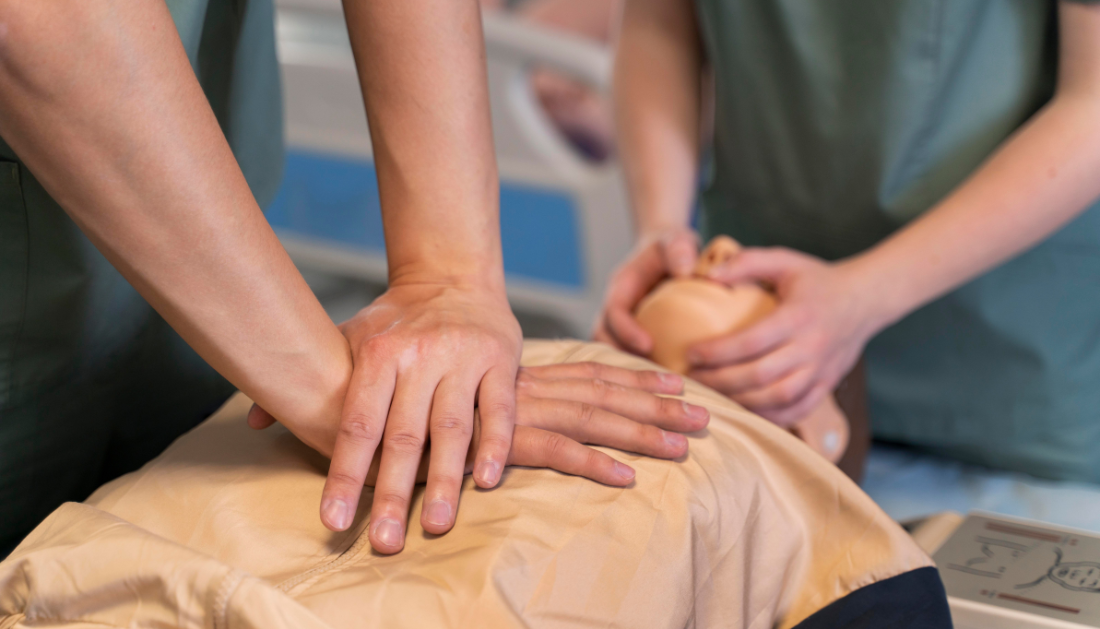

Similarly, the chances of leaving the hospital with no major brain injury drop from 15% after one minute of CPR to fewer than 1% after 32 minutes of no heartbeat.
According to the researchers, the findings can help medical teams, patients, and their families decide how long to maintain resuscitation.
In-hospital cardiac arrest is a common and severe medical emergency, with only around 25% of patients surviving to be discharged. Studies have revealed that prolonged resuscitation times for patients with in-hospital cardiac arrest are associated with decreased survival rates, but experts have been unable to give definitive recommendations on when to terminate resuscitation.
To fill this knowledge gap, researchers examined the impact of CPR duration (in minutes) on the outcomes of 348,996 US people (average age 67 years) who experienced an in-hospital cardiac arrest between 2000 and 2021. CPR was defined as the time between the commencement of chest compression and the first return of spontaneous circulation (ROSC), or the end of resuscitation.
The primary outcomes of interest were survival to hospital release and favorable functional result at hospital discharge, which was characterized as a brain performance score of 1 (good cerebral performance) or 2 (moderate cerebral disability) on a 5-point scale.
After controlling for potentially influential factors such as age, gender, ethnicity, and a variety of pre-existing conditions, the results show that of the 348,996 patients, 233,551 (67%) achieved spontaneous circulation with an average CPR duration of 7 minutes, while 115,445 (33%) did not achieve spontaneous circulation with an average CPR duration of 20 minutes.
Patients had a 22% chance of surviving and a 15% chance of having a good functional result after just one minute of CPR. However, as the time of CPR grew, the chances of survival and a satisfactory functional result declined to less than 1% at 39 minutes and less than 1% at 32 minutes, respectively.
These are observational observations, and the researchers admit that they made the premise that any cessation of resuscitation was reasonable. They also note that collecting time factors during CPR is difficult, and they were unable to account for the severity of underlying illnesses, as well as the quality of CPR or post-resuscitation care at each institution.
However, they claim that this was a well-designed study using the world’s largest in-hospital cardiac arrest dataset, making the findings relevant for hospitals looking to improve their resuscitation performance.
As a result, they write, “The findings provide resuscitation teams, patients, and their surrogates with insights into the likelihood of favorable outcomes if patients awaiting the first return of spontaneous circulation continue to receive additional cardiopulmonary resuscitation.”
For more information:
Duration of cardiopulmonary resuscitation and outcomes for adults with in-hospital cardiac arrest: retrospective cohort study, The BMJ (2024). DOI: 10.1136/bmj-2023-076019
more recommended stories
 Coffee and Cognitive Function: Evidence Review
Coffee and Cognitive Function: Evidence ReviewA new narrative review in Cureus.
 Colorectal Cancer Screening Rates Low in Adults 45–49
Colorectal Cancer Screening Rates Low in Adults 45–49Recent UCLA research reveals that colorectal.
 Gut Immune Cells and Long-Lasting Antiviral Protection.
Gut Immune Cells and Long-Lasting Antiviral Protection.Breakthrough Findings on How Gut Immune.
 Mild Pancreatic Duct Dilatation Signals Higher Cancer Risk
Mild Pancreatic Duct Dilatation Signals Higher Cancer RiskEarly Structural Changes Offer Critical Clues.
 How the Uterus Senses Force During Labor: New Insights
How the Uterus Senses Force During Labor: New InsightsA new study published in Science.
 Fat-Free Mass and Brain Outcomes in Preterm Babies
Fat-Free Mass and Brain Outcomes in Preterm BabiesEarly Fat-Free Mass May Hold the.
 How Hormones Shape Dopamine-Driven Learning
How Hormones Shape Dopamine-Driven LearningNYU Study on Hormones and Cognitive.
 Protein Pair Guides Chromosome Alignment in Mitosis
Protein Pair Guides Chromosome Alignment in MitosisKey Points A joint research team.
 Intensive mind-body retreat rapidly alters brain function
Intensive mind-body retreat rapidly alters brain functionAn intensive mind-body retreat combining meditation,.
 Citrus and Grape Compounds Help Prevent Type 2 Diabetes
Citrus and Grape Compounds Help Prevent Type 2 DiabetesA new clinical trial highlights the.

Leave a Comment